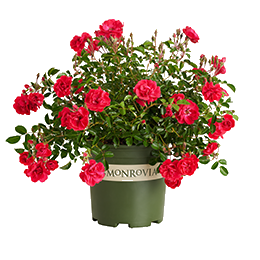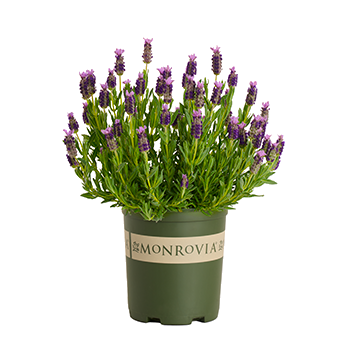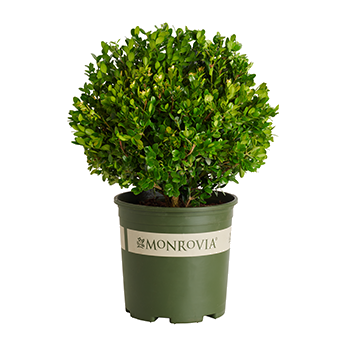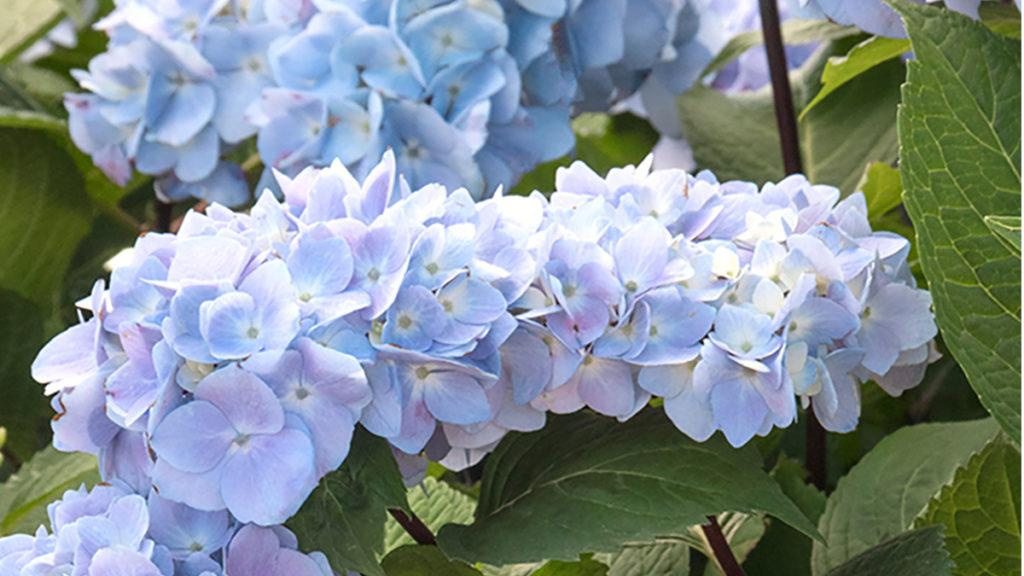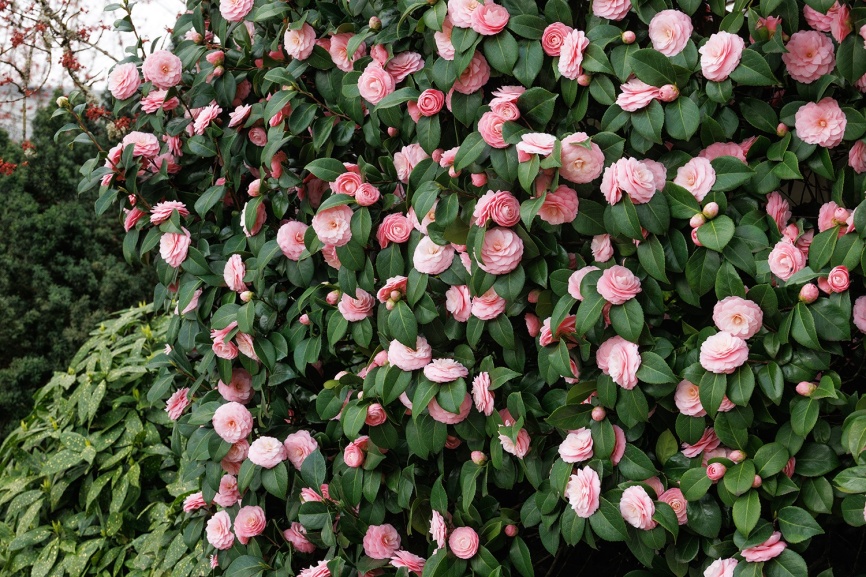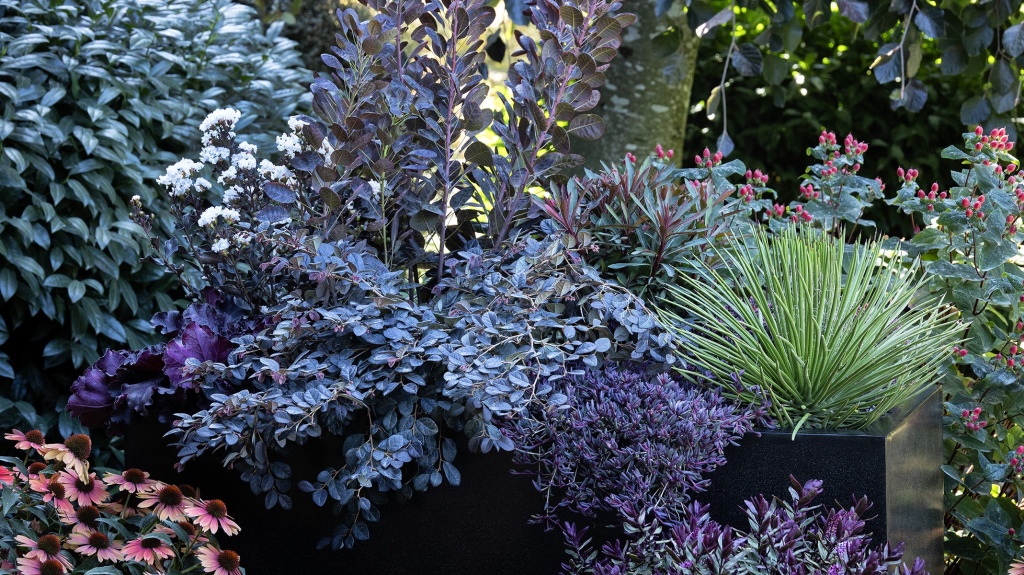You're growing in this Zip Code:
Change LocationDiscover Plants for Your Area
Tango Twirl® Mandevilla
Mandevilla x amabilis 'Monrey'
Retailers Near You
| Description | Spectacular, delicate pink, fully double flowers are held in upright clusters and enhanced by large, deep green, glossy leaves. A lovely choice for trellis or arbor. Evergreen in frost-free regions; treat as a summer annual in cooler regions. |
|---|---|
| Bloom Time | Summer |
| Deciduous/Evergreen | Evergreen |
| Special Features | Fast Growing |
| Problems/Solutions | Coastal Exposure |
| Growth Rate | Fast |
| Flower Attributes | Showy Flowers |
| Patent Act | Asexual reproduction of plants protected by the Plant Patent Act is prohibited during the life of the patent. |
| Landscape Use | Container, Espalier |
| Design Ideas | A perfect plant to espalier onto creative flat trellage fixed to walls. May be trained up and over windows and doors. Drape the runners over fences for a mass of foliage and flowers. Train carefully to spiral up posts or columns and spread out onto arbors overhead. A superior potted plant that may be brought indoors for winter. Place containers against a vertical surface to grow up, or on an elevated surface where it is free to drape or hang in flower covered tresses. Excellent choice for big changes in small courtyards. |
| Flower Color | Pink |
| Foliage Color | Green |
| Companion Plants | Lantana (Lantana); Hibiscus (Hibiscus); Princess Flower (Tibouchina); Plumbago (Plumbago); Purple Fountain Grass (Pennisetum) |
| Care Instructions | Provide enriched, moist, slightly acidic, well-drained soil. During the warm season, water regularly but do not over water during bloom period; leaves will drop if too dry. Water sparingly in winter to avoid cold, wet soil. Apply fertilizer in spring. Prune annually to control size. Provide support such as a trellis or arbor. |
| History | Originally this plant of the dogbane family was organized into the genus Dipladenia, but later redesignated as Mandevilla by John Lindley in the middle of the 19th century. The genus contains over 100 different species native from Mexico south to Argentina. This cultivar was developed by Monrovia Nursery Co. and is proving their most vigorous introduction reaching market in 2003. Its ancestry, as with that of others is murky, but we know its parent species are native to Bolivia and Argentina. This cultivar is a unique hybrid of Mandevillea x amablis, also known as M x amoena, which itself is a hybrid of M. splendens and another unknown species of Mandevillea. Beyond these hybrids only M. boliviensis and M. sanderi are known in horticulture. |
| Lore | Discovered in 2000 by legendary nurseryman Bruce Usrey at Monrovia Growers, California in a bed of Mandevilla amabilis 'Monite', an earlier exclusive introduction. Delicate soft-pink, fully double flowers emerge in clusters throughout the summer and provide an eye-catching display. Each flower is an amazing arrangement of 18-20 petals twirling out from the center measuring three to four inches in diameter. Let this beautiful new selection dance up your garden trellis for all to enjoy. |
| Description | Spectacular, delicate pink, fully double flowers are held in upright clusters and enhanced by large, deep green, glossy leaves. A lovely choice for trellis or arbor. Evergreen in frost-free regions; treat as a summer annual in cooler regions. |
|---|---|
| Bloom Time | Summer |
| Deciduous/Evergreen | Evergreen |
| Special Features | Fast Growing |
| Problems/Solutions | Coastal Exposure |
| Growth Rate | Fast |
| Flower Attributes | Showy Flowers |
| Patent Act | Asexual reproduction of plants protected by the Plant Patent Act is prohibited during the life of the patent. |
| Landscape Use | Container, Espalier |
|---|---|
| Design Ideas | A perfect plant to espalier onto creative flat trellage fixed to walls. May be trained up and over windows and doors. Drape the runners over fences for a mass of foliage and flowers. Train carefully to spiral up posts or columns and spread out onto arbors overhead. A superior potted plant that may be brought indoors for winter. Place containers against a vertical surface to grow up, or on an elevated surface where it is free to drape or hang in flower covered tresses. Excellent choice for big changes in small courtyards. |
| Flower Color | Pink |
| Foliage Color | Green |
| Companion Plants | Lantana (Lantana); Hibiscus (Hibiscus); Princess Flower (Tibouchina); Plumbago (Plumbago); Purple Fountain Grass (Pennisetum) |
| Care Instructions | Provide enriched, moist, slightly acidic, well-drained soil. During the warm season, water regularly but do not over water during bloom period; leaves will drop if too dry. Water sparingly in winter to avoid cold, wet soil. Apply fertilizer in spring. Prune annually to control size. Provide support such as a trellis or arbor. |
|---|
| History | Originally this plant of the dogbane family was organized into the genus Dipladenia, but later redesignated as Mandevilla by John Lindley in the middle of the 19th century. The genus contains over 100 different species native from Mexico south to Argentina. This cultivar was developed by Monrovia Nursery Co. and is proving their most vigorous introduction reaching market in 2003. Its ancestry, as with that of others is murky, but we know its parent species are native to Bolivia and Argentina. This cultivar is a unique hybrid of Mandevillea x amablis, also known as M x amoena, which itself is a hybrid of M. splendens and another unknown species of Mandevillea. Beyond these hybrids only M. boliviensis and M. sanderi are known in horticulture. |
|---|---|
| Lore | Discovered in 2000 by legendary nurseryman Bruce Usrey at Monrovia Growers, California in a bed of Mandevilla amabilis 'Monite', an earlier exclusive introduction. Delicate soft-pink, fully double flowers emerge in clusters throughout the summer and provide an eye-catching display. Each flower is an amazing arrangement of 18-20 petals twirling out from the center measuring three to four inches in diameter. Let this beautiful new selection dance up your garden trellis for all to enjoy. |
Retailers Near You
About Us
We have been pioneers and craftsmen in the art of growing plants for nearly
100 years. Since our founding in Southern California by Harry E. Rosedale, Sr.
in 1926, we have been absolutely dedicated and obsessed with quality.
We have been pioneers and craftsmen in the art of growing plants for nearly 100 years. Since our founding in Southern California by Harry E. Rosedale, Sr. in 1926, we have been absolutely dedicated and obsessed with quality.
